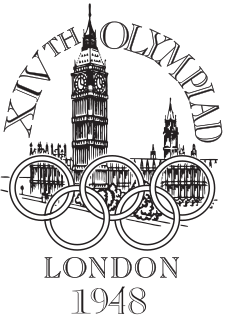
The 1948 Summer Olympics were an international multi-sport event held from 29 July to 14 August 1948 in London, United Kingdom. Following a twelve-year hiatus caused by the outbreak of World War II, these were the first Summer Olympics held since the 1936 Games in Berlin. The 1940 Olympic Games had been scheduled for Tokyo and then for Helsinki, while the 1944 Olympic Games had been provisionally planned for London. This was the second time London had hosted the Olympic Games, having previously hosted them in 1908, forty years earlier. The Olympics would again return to London 64 years later in 2012, making London the first city to have hosted the games three times, and the only such city until Paris and Los Angeles host their third games in 2024 and 2028, respectively. The 1948 Olympic Games were also the first of two summer Games held under the IOC presidency of Sigfrid Edström.
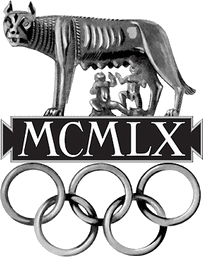
The 1960 Summer Olympics, officially known as the Games of the XVII Olympiad, were an international multi-sport event held from 25 August to 11 September 1960 in Rome, Italy. Rome had previously been awarded the administration of the 1908 Summer Olympics, but following the eruption of Mount Vesuvius in 1906, the city had no choice but to decline and pass the honour to London. The Soviet Union won the most gold and overall medals at the 1960 Games.

The 1932 Summer Olympics, officially known as the Games of the X Olympiad, was an international multi-sport event that was held from July 30 to August 14, 1932, in Los Angeles, California, United States.

The 1928 Summer Olympics, officially known as the Games of the IX Olympiad, was an international multi-sport event that was celebrated from 28 July to 12 August 1928 in Amsterdam, Netherlands. The city of Amsterdam had previously bid for the 1920 and 1924 Olympic Games, but was obliged to give way to war-torn Antwerp in Belgium for the 1920 Games and Pierre de Coubertin's Paris for the 1924 Games.
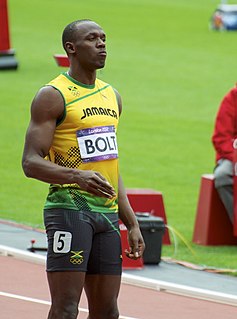
Sprinting is running over a short distance at the top-most speed of the body in a limited period of time. It is used in many sports that incorporate running, typically as a way of quickly reaching a target or goal, or avoiding or catching an opponent. Human physiology dictates that a runner's near-top speed cannot be maintained for more than 30–35 seconds due to the depletion of phosphocreatine stores in muscles, and perhaps secondarily to excessive metabolic acidosis as a result of anaerobic glycolysis.

The 1920 Summer Olympics, officially known as the Games of the VII Olympiad, were an international multi-sport event held in 1920 in Antwerp, Belgium.

A stadium is a place or venue for (mostly) outdoor sports, concerts, or other events and consists of a field or stage either partly or completely surrounded by a tiered structure designed to allow spectators to stand or sit and view the event.

The Olympiastadion is a sports stadium at Olympiapark Berlin in Berlin, Germany. It was originally built by Werner March for the 1936 Summer Olympics. During the Olympics, the record attendance was thought to be over 100,000. Today the stadium is part of the Olympiapark Berlin.

The White City Stadium was a stadium located in White City, London, England. Built for the 1908 Summer Olympics, it hosted the finish of the first modern marathon and other sports like swimming, speedway, boxing, show jumping, athletics, stock car racing, concerts and a match at the 1966 World Cup.

Bislett Stadium is a sports stadium in Oslo, Norway. Bislett is Norway's most well known sports arena internationally, with 15 speed skating world records and more than 50 track and field world records having been set here. The original stadium was demolished in 2004 and construction of a new stadium was completed by the summer of 2005. The New Bislett Stadium was designed by C.F. Møller Architects.

The Olympic Stadium is a sporting venue which was used as the main stadium for the 1928 Summer Olympics in Amsterdam. The venue is currently used mostly for athletics, other sports events and concerts.
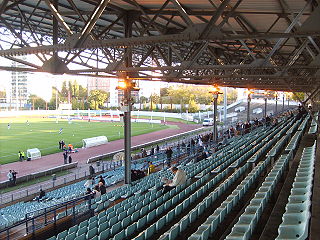
The Stade Olympique Yves-du-Manoir is a rugby, track and association football stadium in Colombes, near Paris, France.

Stockholm Olympic Stadium, most often called Stockholms stadion or simply Stadion, is a stadium in Stockholm, Sweden. Designed by architect Torben Grut, it was opened in 1912, its original use was as a venue for the 1912 Olympic Games. At the 1912 Games, it hosted the athletics, some of the equestrian, some of the football, gymnastics, the running part of the modern pentathlon, tug of war, and wrestling events. It has a capacity of 13,145–14,500 depending on usage and a capacity of nearly 33,000 for concerts.

Max-Morlock-Stadion[ˌmaksˈmɔʁlɔkˌʃtaːdi̯ɔn] is a stadium in Nuremberg, Germany, which was opened in 1928. It is located next to Zeppelinfeld. It also neighbors the Nuremberg Arena.

Chile competed at the 1928 Summer Olympics in Amsterdam, Netherlands. 38 competitors took part in 22 events in 6 sports.

André Kamperveen Stadium, formerly the National Stadion, is a multi-purpose stadium in Paramaribo, Suriname. Since its opening in 1953, the stadium has been the official home stadium of both football teams S.V. Transvaal and S.V. Robinhood and the official national stadium of the Suriname national football team. With an official capacity of 7,100, it is the largest stadium in Suriname.
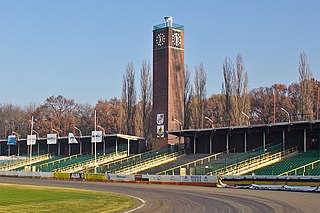
The Olympic Stadium is a multi-purpose stadium in Wrocław, Poland. It was built from 1926 to 1928 as Schlesierkampfbahn according to a design by Richard Konwiarz, when the city of Wrocław was still part of Germany. It is used mostly for American football—home of the Panthers Wrocław and speedway racing, it also serves as the home stadium of Sparta Wrocław.
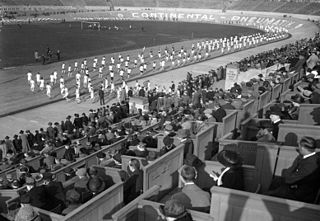
Deutsches Stadion was a multi-use sports stadium in Berlin, Germany. It was located at Deutsches Sportforum in the present-day Westend quarter on the northern rim of the large Grunewald forest. Built according to plans designed by Otto March, it was opened on 8 June 1913, on the occasion of Emperor Wilhelm's II silver jubilee, due to host the 1916 Summer Olympics that were cancelled after the outbreak of World War I. The stadium was destroyed 20 years later and replaced by the current Olympiastadion.

Malmö Idrottsplats, commonly referred to simply as Malmö IP and sometimes as Gamla IP, is a stadium in Malmö, Sweden, that is primarily used for association football. As of 2015, it is the home of women's association football club FC Rosengård, currently playing in Damallsvenskan; the men's clubs Malmö FF and IFK Malmö have played there in the past. The stadium is the third largest in Malmö behind Malmö Stadion and Stadion, the current home grounds of IFK Malmö and Malmö FF respectively. The Sweden national football team has played at Malmö IP twice, in 1929 and 1949. The stadium's capacity has changed throughout the years with various redevelopments and renovations; it is today 7,600, but was historically much higher. The record attendance at the ground was set on 1 June 1956 when 22,436 people attended an Allsvenskan match between Malmö FF and Helsingborgs IF.

Olympiapark Berlin, previously the Deutsches Sportforum and the Reichssportfeld, is a sports and entertainment complex located in Berlin, Germany. The complex served as the Olympic Park of the 1936 Summer Olympics.

























